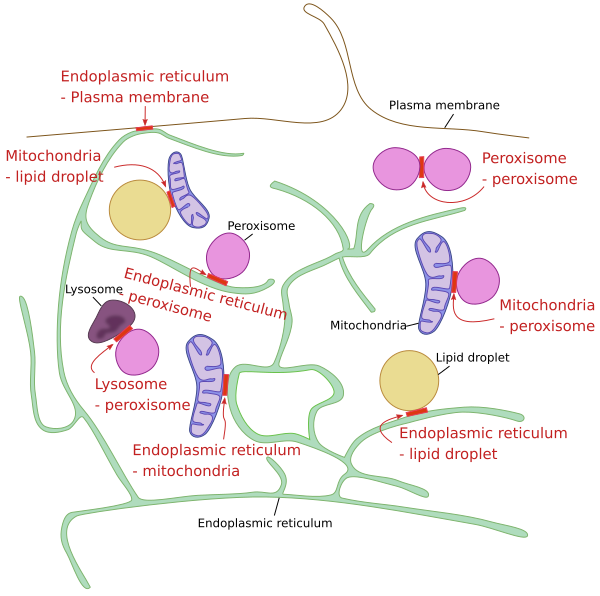Communication between organelles and cell compartments is essential for metabolic reactions, internal signaling, cellular homeostasis, cell survival, cell function, and defense against pathogens. In the previous pages, we learned that there is intense cell compartment communication mediated by vesicles. There are other organelles that do not participate, or at least not so much, in this vesicular trafficking, such as mitochondria, plastids, lipid droplets and peroxisomes.
Mitochondria and chloroplasts are organelles delimited by two membranes that are the main energy hubs of the cells. Mitochondria perform oxidative phosphorylation to get ATP, as well as other metabolic functions. Chloroplasts, which are plastids, are found in plant cells and perform photosynthesis, that is, the transformation of light energy into organic molecules. Other organelles, such as lipid droplets and some plastids, are lipid, protein, and carbohydrate storage centers. Peroxisomes are membrane-bound organelles that perform metabolic functions with a strong involvement in oxidative processes. In the following pages, we will deal with these organelles.
However, these organelles are not isolated from other cell compartments. Besides the vesicular trafficking, there are other ways for organelle-organelle communication. For instance, the membrane contact sites are places where the membranes of two organelles (or one organelle and the plasma membrane; Figure 1) are in close apposition and molecules can be exchanged.

 Vacuoles
Vacuoles 